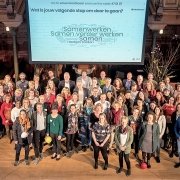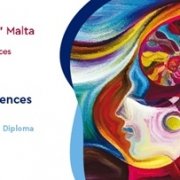E-FABRIK
Excerpt
E-FABRIK is a program that embraces social and digital inclusion and empowerment of young people and people with disabilities. By using the digital resources of their area, they develop, create and build concrete solutions that are answers to a difficulty expressed by the disabled person in the group. E-FABRIK is a journey, a series of encounters, workshops and training sessions for participants (youth and people with disabilities) to lead their projects to completion.
Narrative, origins and objectives of the initiative
What kind of project is this? Please give a short description (summary) of it.
E-FABRIK is a program that embraces social and digital inclusion and empowerment of young people and people with disabilities. By using the digital resources of their area, they develop, create and build concrete solutions that are answers to a difficulty expressed by the disabled person in the group. E-FABRIK is a journey, a series of encounters, workshops and training sessions for participants (youth and people with disabilities) to lead their projects to completion.
During all workshops, the participants are accompanied by "accomplices" (tutors, designers, makers, educators), with whom they develop a personal relationship. But above all, placed in a problem solving situation (to conceive a useful object), they acquire skills as diverse as the respect of commitments, the attitude towards the difficulty of the other, the capacity to help each other, the use of complex digital tools and many more.
A season of E-FABRIK ends with a festive and unifying regional event that includes all the participants. The objective of this event is to give recognition to the participants and their achievements.
E-FABRIK has 5 main objectives:
- Bringing together young people and people with disabilities in a creative community.
- Designing and building real and open-source solutions for disabilities.
- Learning new digital tools by applying and developing new competences.
- Seizing new technologies through active solidarity and becoming an actor in its territory.
- Linking organizations from different fields: disability, youth and digital creativity.
Please tell us why, in general, this project is considered a successful one?
E-FABRIK has been able to adapt to different contexts and situations of participants of the program:
- people with disabilities: heavy motor disabilities, mental handicaps etc.
- young people: schoolchildren, unaccompanied foreign minors, school dropouts etc.
Regardless of the target group, participants are encouraged to complete the project season and overcome difficulties together. One of the great successes is that no group has abandoned anyone during a project. The success of E-FABRIK is also its ability to include and mobilize new audiences, thanks to multiple possible entries in the project alongside its dimensions: social, technical, disability, digital etc.
More perennially, E-Fabrik has observed:
- Strengthening and / or creating social links between the young people of diverse backgrounds and people with disabilities;
- Increase in independent attendance in places of digital creativity by these audiences. This autonomy by the participants has also given rise to particular institutional changes in the later stage (e.g. welcoming of disabled audiences in FabLab).
- The creation / reinforcement of partnership dynamics between neighboring structures that are brought together within the framework of the project, notably in the 16 targeted areas, half of which are located in underprivileged neighborhoods.
And why would you consider it a grass-roots initiative?
E-FABRIK was created by Céline Martineau and Vanessa Mignan, two project managers of Traces.
From their field experience with young people, they have learned that when it comes to the appropriation of scientific concepts, there is not so much a question of access to knowledge as of creating an interest in it, which is a relevant prerequisite for its acquisition. The same goes for digital education: The learning must be accompanied by a personal significance for the learner. This is how E-FABRIK was initiated: giving a meaning development of digital literacy through the social link.
Martineau and Mignan were also inspired by digital communities and the movements that encourage the individual and collective creativity, even the re-appropriation of the technological and digital production of objects and ideas.
Through time the grass-root approach was being maintained by the constant inclusion of the feedback from participants, practitioners and partners, as well as their ideas and needs at the end of each season. Out of this success from the E-FABRIK spin-off, a 5-month training program was initiated: E-FABRIK training is an intensive personal and professional course for young people who wish to:
> Build an innovative and original professional project
> Invent and create new and useful objects for the handicap
> Learn how to use digital manufacturing tools (3D printer, laser cutter, connected objects, etc.)
> Meet and work with people with disabilities
> Participate in a collective adventure and solidarity with other young people
What challenges needed to be solved in this project?
The challenges of the project are to:
* Allow young people without access to digital innovation to reclaim technology through an active and concrete solidarity, to better control their environment and to be actively involved.
* Link places of innovative digital and technical creativity with other places of non-formal education and engage people who work there to create a territorial dynamic.
Is this initiative based on any particular theoretical framework? Which one?
The E-FABRIK experiment is based on:
- the principles and the approach developed more than ten years ago by the Association Traces (Théories et Réflexions sur l'Apprendre, la Communication et l'Education Scientifiques - Association of popular education and scientific mediation)
- E-Fabrik’s desire to offer a rewarding and emancipatory experience of knowledge, to use creativity as a motor of curiosity and a vector of learning;
- E-Fabrik’s belief in the value of using the social bond as a tool for sharing knowledge and, conversely, sharing this knowledge as a tool for social connection;
- the importance to take up the challenge of digital inclusion of the most remote and vulnerable groups.
(Appendix) Is your intervention standing on its own or is it a part of a bigger and more holistic approach?
Please describe the group(s) intended as beneficiaries of this initiative
Why has this group (have these groups) been chosen?
Young people aged between 15 and 25 and people with disabilities are the main beneficiaries of E-Fabriks.
E-FABRIK targets young people, with a special focus on those who live the furthest from digital innovation. Thanks to the local partnerships set up with neighborhood structures, E-Fabrik was able to reach young people with limited use and knowledge of ICT (often limited to Facebook, YouTube and Snapchat on their mobile phone). They stay attracted by the solidarity dimension of the project and the digital tools offered.
The people with disabilities involved in the E-FABRIK project are, for the most part, multi-handicapped. For beneficiaries with mental and / or physical disabilities, the project turns out to be very beneficial on various levels.
The other beneficiaries are professionals in the area of youth work as educators, facilitators, caregivers for disabled persons, therapists ... and FabLab, who are accompanying participants in the programme benefiting from them through:
- trainings in multi-stakeholder project management and digital tools
- by having the opportunity to meet with other peers in the field
- by getting a space for reflection on their practices (openness to cooperation with other structures, digital contribution in their practices, ...)
Could you please tell us something about the relative size of the (of each) target group, within the school/university population, region and/or country?
E-Fabrik has 1 group per territory – whereas a territory is to be understood in E-FABRIK jargon as a local partnership between 3 organizations (diasbled, youth and fablab) at the scale of a neighborhood, city or urban area.
A group is formed by:
- 8 to 12 young people
- 3 to 4 people with disabilities
Which social characteristics are taken into account and what is the geographical area covered?
E-FABRIK is one of the few digital education projects that has a perfect gender balance of its beneficiaries. During the experiment, girls accounted for 49.6% of their beneficiaries.
Geographical area:
- population census data
- data on enterprises and establishments i.e. “employment possibilities”
- household income data
- data on jobseekers at the end of the month (DEFM)
Furthermore, E-Fabrik is planning to extend the initiative to other French region in the next two years.
On which level is the project implemented?
Please describe the political and socio-economic factors that you believe have been important enablers for your initiative
Did the initiative have political support?
Yes. E-FABRIK had different kind of political support (mostly financial), alongside the 3 different levels of inclusion:
- digital education
- youth
- disabilities
How did it fit with local, regional or national policies?
E-FABRIK did fit into a governmental funding scheme that aimed to enhance digital, but regional authorities also provided part of the funding. This had no direct impact on the nature and structure of the initiative, but without this initial funding, the initiative may not have been so ambitious from the early beginning. After 3 years of implementation, E-Fabrik is now receiving more local support.
Who are the stakeholders supporting the initiative?
E-Fabrik has different stakeholders supporting them from public or private sectors.
Are there particular demographic changes present that are influencing the project?
No.
What is the institutional strategy and culture of the (educational) organization?
It is relating to an over-arching strategy (ie. a mission) of the main organization, Traces.
To what extent does the initiative have an influence on institutional policy (or potential influence) of the (educational) organization?
The influence can be observed because of:
- Long-term, ongoing partnerships
- Renewal of the TRACES board (Meanwhile, the new TRACES board also includes partners from the E-FABRIK network, which means the board is now closer to our “new” inclusive values)
- Observed Higher ambition on diversity
- Taking into account different definitions of school (2nd chance school, vocational school…) which were not fully thoroughly considered as relevant or not so much taken into account before the launch of the programme
(Appendix) Is there public support for your initiative and the issue it addresses?
(Appendix) What other factors do you think have been important for the success of this initiative?
Please describe the overall initiative design and the methods and tools used to reach the goals
Please describe the specific activities carried out.
E-FABRIK is a 20-workshop program, divided in 5 phases:
- Getting to know each other
- Identifying, drawing, exploring
- Discovering and training
- Prototyping, testing, improving
- Celebrating
What were the key roles (teacher, student, management team etc.) within the project?
The piloting of E-FABRIK is carried out by 4 employees of the Traces association that represent 2,5 full-time persons (FTE). E-FABRIK also has a scientific board, which represents designers, teachers, special need educators, funding partners and other stakeholders.
What ideas, tools, theories, models, methodology (etc.) have been used to reach the goals?
E-Fabrik has to seize opportunities to work with communities outside their comfort zone. In doing so, the project can be innovative and promote social links.
Theatrical pedagogical framework: Problem-based Learning / Learning by doing / Project-based learning / Community-based education
Tools: Pedagogical guide and evaluation tools.
What are the final revenues of the project?
Please describe if your project ensured its sustainability
If so, how did you ensure the short-term impact of the project?
The short-term impact is ensured by a shared responsibility within the local partnerships, as well as a strong coordination support from the E-FABRIK team.
And how did you ensure the long-term impact of the project?
E-Fabrik wants to ensure the sustainability of the project by accompanying the structures of the partners and their participants to an autonomous project management. This is done, among other things, by supporting the created territorial dynamics.
Has your project been replicated elsewhere?
Please tell us about the resources used in this initiative
What was the budget for the initiative?
100.000 EUR per year (mix of private and public)
How much did the initiative depend on volunteers?
How were the costs perceived by the public/the sector/other stakeholders?
To what extent did the initiative achieve its objectives?
Please describe the evidence to support the success of your initiative.
E-FABRIK has both a quantitative and a qualitative evaluation through questionnaires and interviews:
- Formative – based on the course of the project
- Summative –based on training and interactions between apprentices and associates at E-FABRIK
- Summative – based on the impact
E-Fabrik`s indicator of success, besides the number of participants and project completions, are continuously assessed by means of focus groups for qualitative data and collection of quantitative data and are the following:
- strengthening or creating the link between people with disabilities
- to frequent and use, autonomously, places of digital creation
- produce and share solutions around disability
- become an active citizen in your neighborhood, your city
- get involved in solidarity, on a daily basis
- transmit to these peers and others
- reclaiming digital tools and using open-source
- involving the community of accomplices in a dynamic of territory, with its inhabitants
- allow professionals from the concerned territories to meet and continue to work together
- highlight the strengths and constraints of the project
- create a multi-partnership network of structures, working in very different fields
- valuing and disseminating, to spread
Our indicator of success, besides the number of participants and project completions, are continuously assessed by means of focus groups for qualitative data and collection of quantitative data and are the following:
- strengthening or creating the link between people with disabilities
- to frequent and use, autonomously, places of digital creation
- produce and share solutions around disability
- become an active citizen in your neighborhood, your city
- get involved in solidarity, on a daily basis
- transmit to these peers and others
- reclaiming digital tools and using open-source
- involving the community of accomplices in a dynamic of territory, with its inhabitants
- allow professionals from the concerned territories to meet and continue to work together
- highlight the strengths and constraints of the project
- create a multi-partnership network of structures, working in very different fields
- valuing and disseminating, to spread
Did the intervention lead to any unintended (positive) outcomes?
What indicators (quantitative and qualitative) have you measured to demonstrate success?
See question 1.

 (C)E-Fabrik • G.de CROP
(C)E-Fabrik • G.de CROP Sale für Alle 2018
Sale für Alle 2018

 Interkulturelles Mentoring
Interkulturelles Mentoring
 Simona Cerrato
Simona Cerrato

